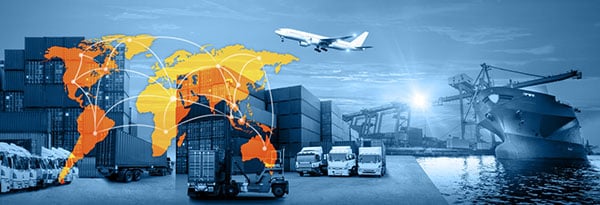
Supply Chain Tracking of High Value Items
Supply chain tracking has gone through quite a transformation over the last few decades. With a continually growing inclusion of technology into each facet of the chain, operations have evolved and given corporations the opportunity to truly improve their bottom lines. As with any evolution, however, there are certainly glitches along the way. One of the major challenges that have come to light in recent years is the inability to properly track high-value assets/containers.
Monitoring the use and location of assets/containers is critical in inventory management. There are four core components that make tracking high-value items so significant:
- Improving supply chain visibility
- Automating as much of the process as possible
- Keeping partner and customer relationships intact
- Increasing the company’s bottom line by focusing on ROI, loss prevention/anti-theft, and avoiding additional operational costs
Properly tracking high-value items/containers means dynamically incorporating technology into already existing systems and operations. On top of that, however, it can also mean modifying existing systems and operations to adequately solve this notable issue. Knowing how to incorporate these additions and changes seamlessly is key.
At Wireless Data Systems, Inc. (WDS), we were given a firsthand look into the true magnitude of tracking high-value assets and furniture supply chain tracking.
Problem Solving to Safeguard High-Value Assets
One of our clients was shipping a container full of high-value IT equipment to a port in Europe. The equipment was unpacked, configured (updated), and repacked. Unfortunately, the container manifest had a serial number for a computer that did not exist on the container. This mismatch ended up having a catastrophic impact. The pro forma invoice did not match the actual contents of the container and the contents claimed on the pro forma. In this scenario, the company then runs the risk of getting the container impounded.
This scenario highlighted the undeniable need for a unique high-value item repacking module that was robust, dynamic, and, most importantly, dependable. As such, WDS developed a solution that made it fast and accurate to pull any empty box in the warehouse and use that box for any of the 50-60 PCs that the client was repacking and loading onto the container.
How did this fair? The response was remarkable. Our new module provided a solution to the operational problem in the warehouse. Plus, we were able to give the client great confidence that high-value containers would not be held due to mismatching data on the documentation.
The complexities of shipping container tracking cannot be overstated. Any glitches in operations can be devastatingly costly and ruin business relationships. At WDS, we extinguish the glitches with a system that tracks assets of any value flawlessly.
Why Track High-Value Assets/Containers?
The failure to properly track high-value assets/containers can result in irreparable damage to an organization. Items may be held by customs at the destination, disrupting all supply chain timelines and ruining customer relations. In addition, this may lead to financial penalties. The loss of items has an enormous impact on a company’s bottom line.
In fact, mistakes are impossible to economically reverse (i.e. the cost to return wrong items is too costly and most times considered a loss). This makes accuracy vital. Accuracy in tracking works to reduce disputes upon receipt of the final destination. Some of the most critical reasons for tracking high-value assets/containers include:
- The loss of items has a substantial impact (financial, operational, relational, and more)
- Even small delays can impact deadlines and customer satisfaction
- Items/containers are of greater value to thieves
- High-value assets are under greater scrutiny for imports and exports
The ROI of a supply chain tracking system for high-value assets is multifaceted. Avoiding a disruption in the supply and distribution chain has huge financial implications. How much would it cost to leave cargo behind? How much would it cost for cargo to be delayed? How much would it cost for cargo to never reach its final destination? Calculating these numbers showcases the importance of tracking for high-value items.
WDS Specializes in High-Value Items Tracking
Loss prevention is an imperative aspect of any supply chain operation. For containers, for instance, the system must be able to verify the accuracy of the item identification markings (i.e. Item Numbers, Serial Numbers, Pallet, and Country of Origin). When it comes to dealing with high-value items, the stakes are high.
The following are some of the best practices that must be employed in high-value asset/container tracking:
- Always serialize high-value assets and track them with an inventory management system
- For containers, verify all items are on the manifest
- Use a system that gives the greatest visibility into asset management data
- Implement tracking at each step: Initial receipt, storage, truck loading, unloading, etc.
At WDS, we not only keep up with best practices and standards in our robust tracking system, but our technology goes above and beyond to ensure accuracy, dependability, and speed. In addition, we understand that each organization necessitates a unique set of requirements. Our system can be modified to handle unique situations. Plus, in the near future, WDS will be able to assist in the tracking of high-value assets virtually from anywhere.
When it comes to tracking high-value assets, the stakes are too high to rely on anyone but WDS. Our mission is to track everything, everywhere, all the time. Contact us today to learn more about our asset management system.
